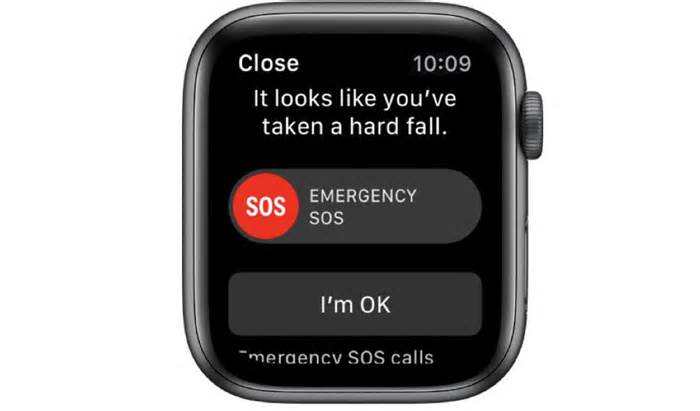When Apple revealed Apple Watch Series 4 in September 2018, it introduced Fall Detection, a supremely useful feature which may add new aspects to make it far more innovative. That’s according to a new continuation patent, revealed this week.
In the patent it becomes clear that future Apple Watch models will need a hardware upgrade to improve the system.
As reported by the continually vigilant Patently Apple, the new patent is designed to take the Fall Detection capability further. How it works right now is that if you fall hard, the Watch spots it.
It then starts monitoring your movements and after a minute of immobility, it starts a 30-second countdown and taps you on the wrist while sounding an alarm which increases in volume to alert someone nearby. It can then notify others by calling them, such as family members, carer, or even the emergency services. It can also sound an alarm. Before it makes those calls, the Watch taps you on the wrist to ask if you’re alright. You can choose to say “I’m OK” to dismiss the alert or to call emergency services.
The feature is enabled by default on Apple Watches belonging to those over 55 years old, otherwise it’s activated in a setting.
So, what’s offered in the new continuation patent?
There are three new patent claims. Two simply clarify that the device to which they refer is a wearable mobile device and, specifically, a smart watch.
The third is the key claim. It says: “A system comprising: one or more processors; one or more sensors; and one or more non-transitory computer readable media storing instructions that, when executed by the one or more processors, cause the one or more processors to perform operations comprising: receiving motion data obtained by the one or more sensors over a time period, wherein the one or more sensors are worn by a user…”
There’s lots more of this kind of writing and full marks to the analytical mind of Jack Purcher at Patently Apple for reading carefully through it all. Maybe it should be called Patiently Apple.
The key facts are that Apple is giving itself room to make this system work with more sensors and processors, which may indicate that while the current Fall Detection works with existing sensors, more will be added to enhance the feature.
This could be a game-changer because it might enable the system to add more data to the notification it generates, so that when it contacts emergency services, the information it gives is comprehensive and, potentially, life-saving.
As Patently Apple points out, “Health metrics that may be computed using the electrodes include, without limitation, heart functions (ECG, EKG), water content, body-fat ratios, galvanic skin resistance, and combinations thereof.”
For an eloquent and detailed imagining of what this might mean, 9to5Mac’s Ben Lovejoy describes just what the emergency responder might hear when they answer the phone: “This is an automated emergency call on behalf of John Appleseed. John is a 38-year-old man who has had a hard fall, and is non-responsive. His current location is approximately 767 5th Ave, New York, NY 10153. John’s current heart-rate is 33 beats per minute. His normal resting heart rate is 42 beats per minute. John is 5 feet and 11 inches tall and weighs 168 pounds. His BMI is 23.5 and his body-fat is 22%, both within healthy ranges. He shows no sign of afib. John takes regular exercise, and the health data on his phone does not record any known medical conditions or medication. This message will repeat a further three times, with updated heart rate.”
All of which is pretty cool. Of course, the usual disclaimer applies, that a patent doesn’t always reach fruition in a product. But in this case, let’s hope it does.
Follow me on Instagram by clicking here: davidphelantech and Twitter: @davidphelan2009
I’ve been writing about technology for two decades and am regularly struck by how the sector swings from startling innovation to persistent repetitiveness. My areas of

